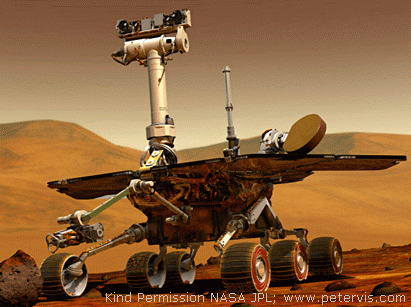RAD6000 Spacecraft Microprocessor

The RAD6000 is a radiation hardened spacecraft microprocessor manufactured in approximately 1995. It was a circuit-by-circuit translation of the IBM POWER microprocessor chip.
System/6000
Contrary to popular belief, this is not a processor chip. This is the name given to a product line of IBM workstations, servers, and supercomputers.
Computers of the System/6000 series followed the same system architecture. The early models in the series provided micro-channel bus interfaces. There were many in the series, with model numbers ranging from Model 7006 to 7249. There was also the Deep Blue super computer that used the same system architecture.
POWER or POWERn
POWER was the name given to the first IBM microprocessor chip, to reflect the architecture it had. The following versions were given a number, hence POWER1, POWER2, POWER3, POWER4, and so forth up to POWER8.
Amazingly, the POWER1 processor consisted of individual integrated circuits. It required ten individual discrete chips to make the processor! POWER2, launched in 1993, was an improved version requiring just eight chips. It was extremely successful, and IBM transferred it into a single chip package known as POWER2 Super Chip. Subsequent POWER processors were single chip implementations.
In 1992, the major computing bodies, Apple, IBM, and Motorola (AIM) formed the AIM Alliance with the goal to create a commercially viable microprocessor based on the same architecture as that of the POWER processor. They designed the PowerPC architecture, and created the first processor, the PowerPC 601. The PowerPC family of processors are in a large number of Apple computers.
The IBM System/600 range of computers and servers also used this new processor chip. Hence, if the question was, which processor does the IBM System/6000 family of workstations use? Then the answer could be POWERn and PowerPC.
All the promotional literature of that era referred to the POWER1 processor as "RS/6000 CPU", where R indicates RISC architecture. The RAD6000 is a circuit copy of the IBM RISC System/6000 single chip CPU; therefore, the RAD6000 is a circuit-by-circuit translation of the IBM POWER microprocessor. The successor to the RAD6000 is RAD750, which is a circuit-by-circuit translation of the PowerPC 750 microprocessor.
Mars Rovers Spirit and Opportunity

The RAD6000 is in the Mars Rovers Spirit and Opportunity. The rovers have the capability to avoid rocks, pits, and cliffs. Their software contains some of the most advanced AI routines ever written. These routines allow the rovers to work autonomously taking samples and photographs.
Advantages of RISC

Spirit and Opportunity use solar panels for their power. These panels continuously charge their main batteries providing 1000 W hours per Sol. Everyone wants to know what the NASA term Sol means. It refers to the Martian solar day.
Usually the RAD6000 has selectable clock frequency options of 33 MHz or 66 MHz however, in the rover project it operates at 20 MHz because a slower clock speed consumes less power. The motherboards have 128 MB RAM and 256 MB of flash memory for program storage. This memory is of course radiation hardened, which is a process that strengthens microprocessors to operate in the harsh radiation environments of the space.
The great thing about the RAD6000 processor is that it has a 32-bit RISC architecture, which allows the processor to pipeline and execute multiple instructions per single clock cycle. This means that it is possible to achieve a high processing throughput even when the clock frequency is low. This processor has only 1.1-million transistors, which means that the power requirement will be very low allowing the motherboard to operate with solar cells.